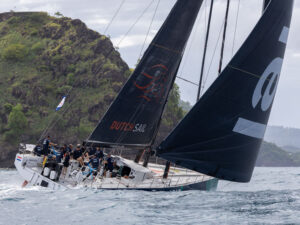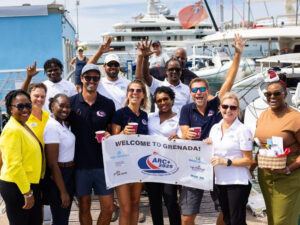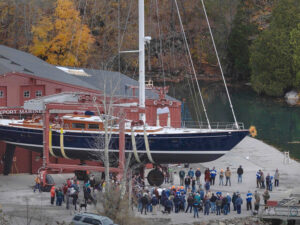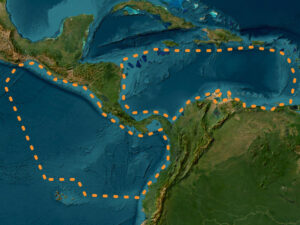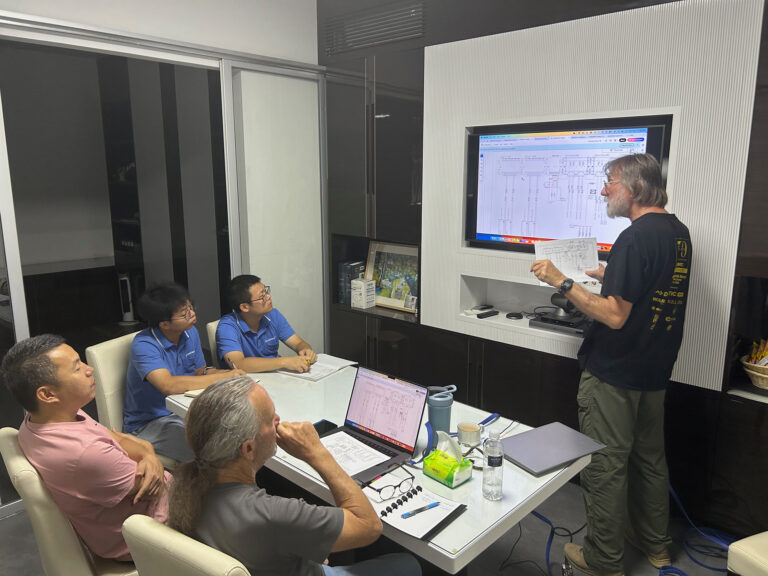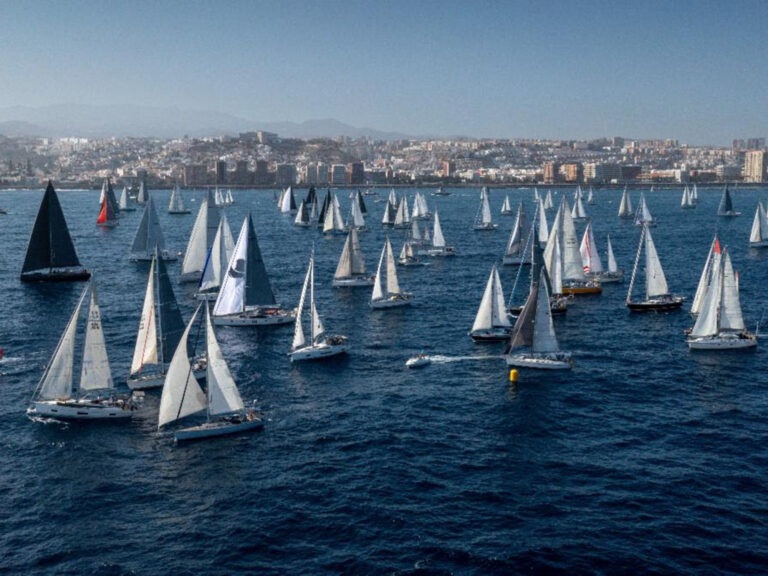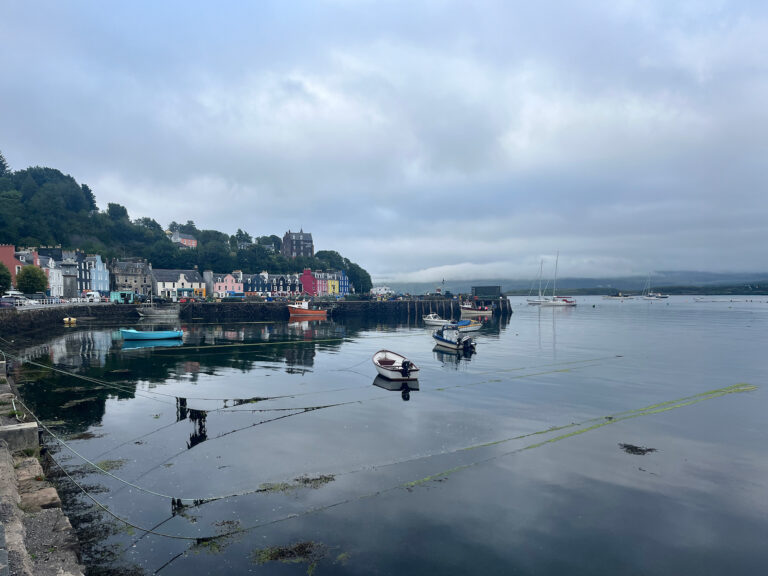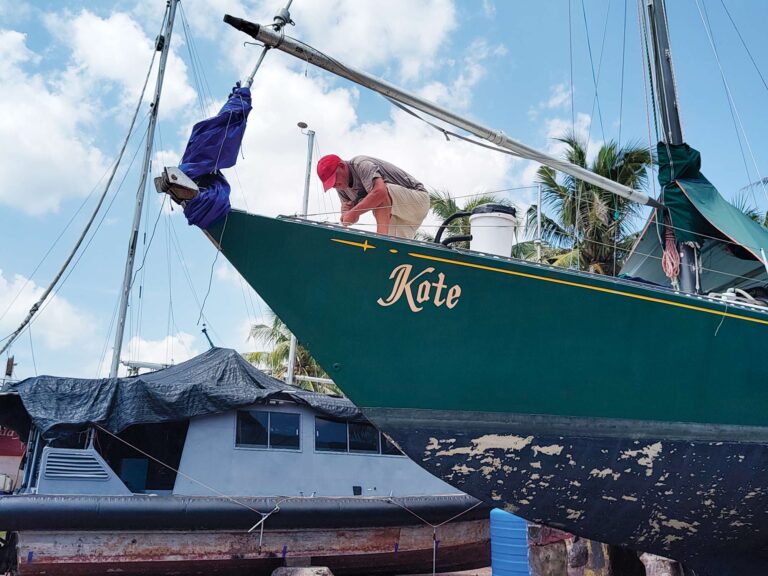
The Code 0 has only really been around for 20 years, born in the Volvo Ocean Race, back when it was still called the Whitbread Around the World Race. They have characteristics of being an upwind sail, but are classified as a downwind sail. Some are built out of nylon, while others use a heavier, plastic-like material. Not knowing really what to call them, they are often referred to as a “Gennaker.” The result is, there are a lot of things we think we know about a Code 0, many of which aren’t true, or at least, not always.
1. A Code 0 is another name for a Gennaker.
Not necessarily. The term Gennaker can cover a Code 0, Screecher, or a reaching spinnaker. Gennaker is just a general term for a potential downwind sail.
2. A Screecher and a Code 0 are the same thing.
Nope. A Screecher is specifically a multihull term for a very large, very flat sail, for going upwind or just cracked off. Catamarans and trimarans have notoriously small jibs making them grossly underpowered in light breeze. A Screecher is larger, higher clewed, and fuller than a Genoa, but much flatter than a Code 0.
3. A Code 0 is strictly a racing sail.
Cruisers of all ilks have taken to the sail for its range and ease of use. True downwind spinnakers can be unruly and intimidating for a shorthanded or novice crew, but the range and furling ability of the Code 0 make it a fantastic sail for a weekend outing. We find that once introduced to the Code 0, cruisers will use this sail more than any other on the boat.
4. All Code 0s are created equal.
A Code 0 is a Code 0 is a Code 0, right? Not true. While the Code 0 for racing monohulls is restricted to a midgirth of at least 75% of the foot length and a leech that is no more than 95% of luff length, Code 0s for cruising boats and multihulls can be significantly larger and have a lot more variety in their design, from very deep to very flat. Quantum’s racing Code 0s and some cruising Code 0s are made with Dimension-Polyant CZ GP fabric, a stiff, plastic-like material, while Code 0s for multihulls are made with heavy nylon.
The most important question to ask yourself as a boat owner is, “What do I want to do with this sail?” Are you a racer or a cruiser? Do you want to use it to sail in very light air to sail relatively close to the wind, or will you use it on a broader reach? The answers to those questions will help your sailmaker determine the design of the sail that’s right for you.
5. A Code 0 is strictly a downwind sail.
A Code 0 is classified as a spinnaker in terms of racing, hence the restriction on the length of the midgirth, but it’s not a true downwind sail. If you’re going downwind, you’ll use either a symmetrical or asymmetrical spinnaker. While it does depend on the wind speed, especially for boats without a 155% genoa, there’s a lot of range between the jib and the first true spinnaker. As soon as you crack off even 5° from the range of the jib, you could be into Code 0 territory.
In very light air, up to eight knots, a Code 0 designed with a longer leech and lower clew can be sheeted inboard and used at a higher angle. A higher clew with the sail sheeted to the back of the boat is a reaching Code 0, and can be used in slightly higher breeze. In an ideal world, we’d sell every boat two Code 0s: One for upwind and one for reaching, but we know most boats can only carry one. Whether you’re a racer or a cruiser, it comes back to that question from the sailmaker—what do you want to do with this sail?
6. A Code 0 is a beast to get down.
Okay, so the early Code 0s did require an experienced crew to get them back onto the deck safely and cleanly. But today, the majority of Code 0s are designed on a top-down furler, making it possible for even a novice crew to go from the jib to the Code 0 in a matter of seconds. And while some more experienced crews may still forgo the top-down furler as a weight consideration, most boat owners find that the slight increase in weight on the bow offers them the ability to seamlessly change modes on a tenth of a knot, often for huge gains in light wind conditions.
7. A Code 0 is really expensive.
Early top-down furling systems required a custom-made torsional rope. Really good systems with a quality torsional rope were sometimes as expensive as the sail. However, with more and more manufacturers offering top-down furling systems and torsional rope now available pre-made on a drum (at least for mid-size boats), the overall cost of the sail and the system has come down significantly.
8. A Code 0 can do anything.
We just said that the Code 0 is appropriate over a huge range especially in light wind conditions, and being situated on a top-down furler makes it hugely convenient, even for novice sailors, however a Code 0 cannot in fact, “do anything.” We see Code 0s fail most often when they’re pushed too high in too high of breeze—this is a particular problem on multihulls because the boats are so stable. A Code 0 also can’t live indefinitely tacked to the bow of your boat. While cruising Code 0s will have a thin strip of UV protective material, if left indefinitely in the sun they are sure to shrivel up into a brittle, moldy end.
In racing, to maximize a Code 0, it’s important to know your crossovers. Be diligent about going out and recording wind speed and wind angle as you switch between your jib, Code 0 and spinnaker, and then stick to those numbers.
So there you have it. A Code 0 will take you through more wind angles than any other headsail on your boat. Add a modern top-down furler and it’s easier to get up and down than a spinnaker. Racing in light, shifty conditions, it might just be the sail that helps you eek out precious tenths, which turn into minutes or even hours on a long distance race. And they’re a whole lot less expensive than they used to be. The last question is, what are you waiting for?
This cruising tip is courtesy of Quantum Sails.

